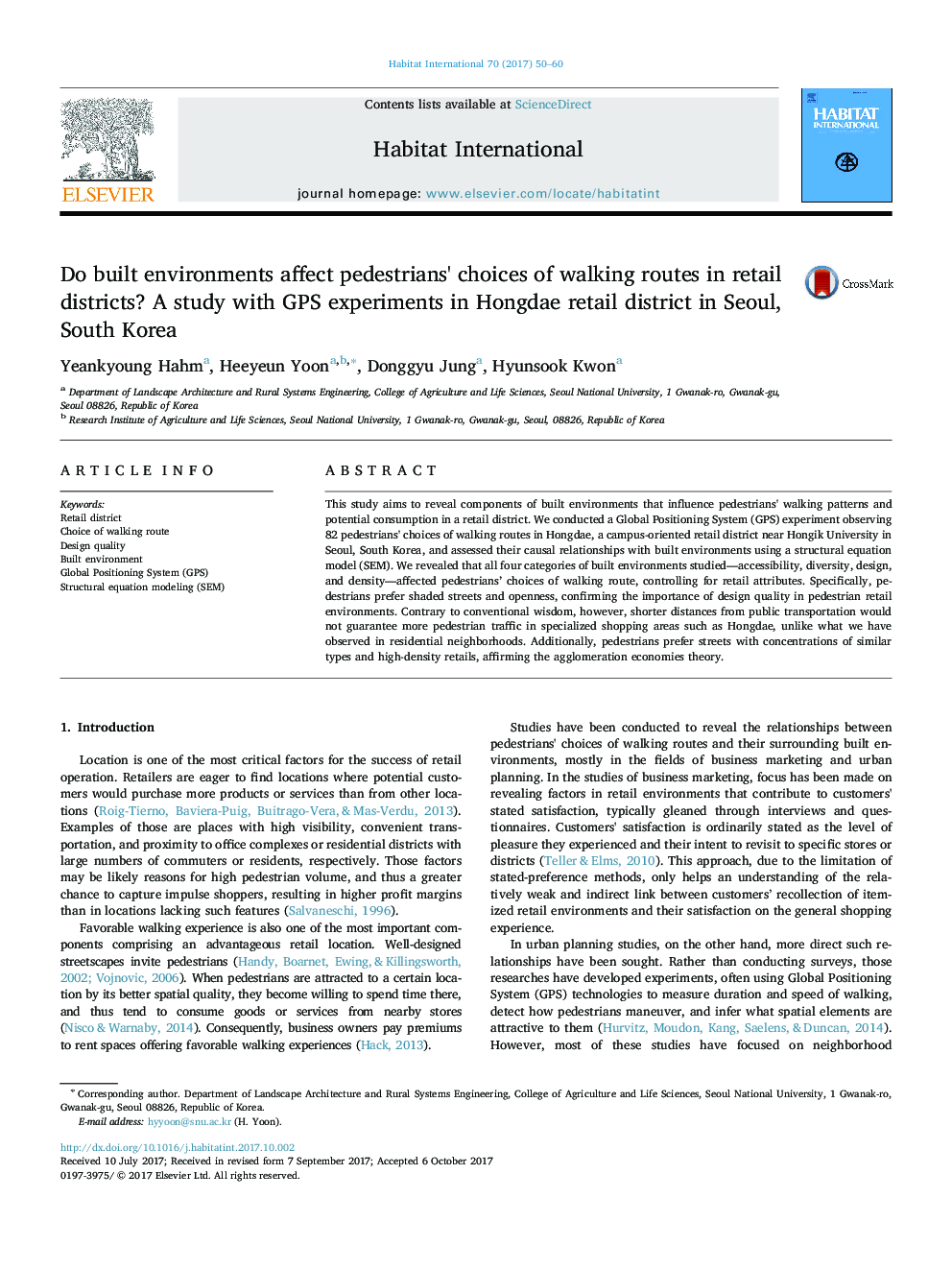| Article ID | Journal | Published Year | Pages | File Type |
|---|---|---|---|---|
| 7455343 | Habitat International | 2017 | 11 Pages |
Abstract
This study aims to reveal components of built environments that influence pedestrians' walking patterns and potential consumption in a retail district. We conducted a Global Positioning System (GPS) experiment observing 82 pedestrians' choices of walking routes in Hongdae, a campus-oriented retail district near Hongik University in Seoul, South Korea, and assessed their causal relationships with built environments using a structural equation model (SEM). We revealed that all four categories of built environments studied-accessibility, diversity, design, and density-affected pedestrians' choices of walking route, controlling for retail attributes. Specifically, pedestrians prefer shaded streets and openness, confirming the importance of design quality in pedestrian retail environments. Contrary to conventional wisdom, however, shorter distances from public transportation would not guarantee more pedestrian traffic in specialized shopping areas such as Hongdae, unlike what we have observed in residential neighborhoods. Additionally, pedestrians prefer streets with concentrations of similar types and high-density retails, affirming the agglomeration economies theory.
Keywords
Related Topics
Social Sciences and Humanities
Social Sciences
Development
Authors
Yeankyoung Hahm, Heeyeun Yoon, Donggyu Jung, Hyunsook Kwon,
